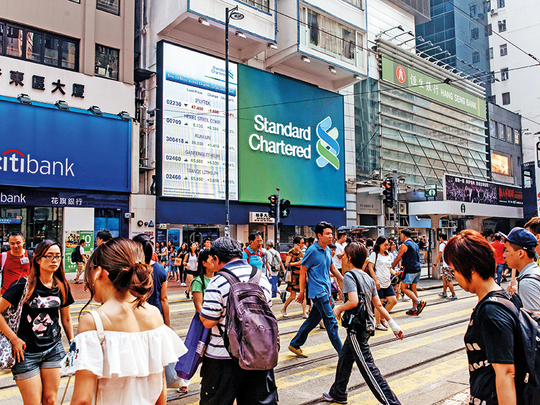
LONDON
A failure to resume dividends and to grow its loans overshadowed a recovery in first half profits for Standard Chartered, pushing its shares 5 per cent lower on Wednesday.
The bank’s profit jumped 93 per cent in the six months to the end of June, partly because it avoided the hefty losses from its private equity business and bad loans that blighted its results a year ago.
StanChart’s underlying loan impairments of $583 million for the first half were down from $1.1 billion in the same period a year ago. These are closely watched by investors in the Asia-focused bank, which has had a glut of bad debts in the past few years following over-exuberant lending.
“We are positioned to resume growth, and we have shown early encouraging signs we can do that,” Chief Executive Bill Winters told reporters on a conference call.
Despite the signs of progress and optimistic tone from its executives, StanChart shares fell more than 5 per cent in London following the results announcement.
The bank said it would not resume paying dividends, as some investors had hoped for following its stronger profits and capital position. StanChart said it would revisit the issue at the end of the year.
HSBC on Monday reported rising profits and the return of a further $2 billion to shareholders via a stock buy-back, in a sign that StanChart’s bigger rival is much further ahead in its turnaround plan.
HSBC has paid out around $10 billion a year in dividends in the last four years, while StanChart cut payouts since November 2015 to focus on restructuring.
Revenue challenge
Having slashed costs and stamped out riskier behaviour at the bank, Winters’ biggest problem now is growing revenues to boost profits.
In the two years since he took up his job at StanChart, former JPMorgan banker Winters has announced over 15,000 job cuts, raised more than $5 billion in capital and overhauled how the bank makes loan decisions in an effort to make it sturdier.
Despite that, revenue growth remains stubbornly low and the bank is struggling to find more profitable lending opportunities after scaling back its risk exposure.
“We suspect investors will be disappointed with a lack of loan growth and lukewarm commentary on capital return,” analyst Joseph Dickerson at Jefferies in London said in a note after the results.
The bank’s loans totalled $267 billion at the end of the second quarter, unchanged from the previous quarter.
Low global interest rates, lost income from axed businesses and rising competition from regional players in its main markets have combined to temper hopes of an income recovery.
The bank said its core capital ratio, a key measure of financial strength, rose to 13.8 per cent at the end of June on improving profits











